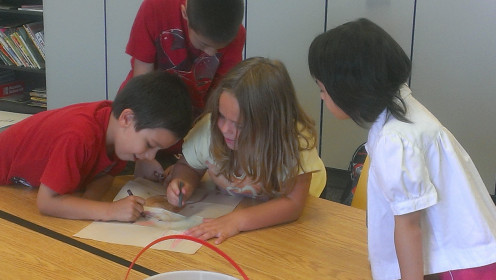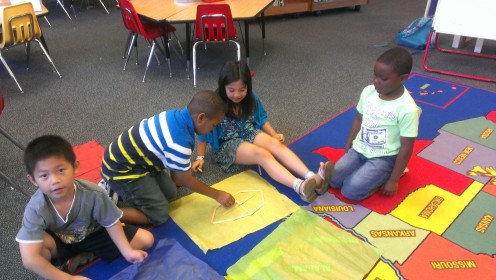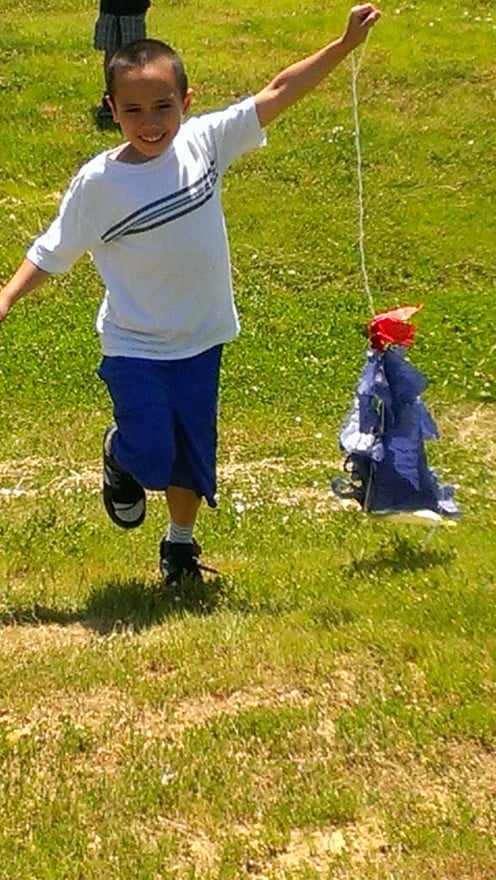- HubPages»
- Business and Employment»
- Small Businesses & Entrepreneurs»
- Entrepreneurship
How To: Starting a Successful Summer School
These Children Are Enjoying A Successful Summer School

Steps to a Successful Business
- Step One - Assess your needs
- Step Two - Procure a spot for your business
- Step Three - Decide on your services
- Step Four - Put it all together
You can change the order of your steps. But these are the least of the steps you must do to get started.
Starting A Successful Summer School
For the past three years I have been running a summer school program. Each year it gets easier as I figure things out. I thought I would write a hub about how I did it and possibly help others who want to accomplish the same thing without all the trial and error.
First, before you do anything else, you need to determine whether or not there is a need for your services. In this day and age of budget cuts and services that are cut because of that, there is usually a need for some sort of summer school program. But don’t waste your time and energy – and any funding you may have – if there is no need for it in your area. Some districts have actually done the right thing and saved summer school funding for their students! But even then, there may be a need for extra services.
My Group Of Summer Students

Assess Your Needs
There are several ways to assess the needs of your students...here are just a few:
- DIBELS - you can assess alphabet and phonics knowledge, as well as fluency
- Curriculum Assessments - many textbook series have assessments already built in - some even have pre- and post- tests.
- District Assessments - use the assessments already made by your district. You can pick and choose what you want to assess.
- State Assessments - again - use assessments already made by your state - pick and choose which portions you need.
- QPA - Quick Phonics Assessment - just what it says - a quick way to assess phonics
- Self-made assessments - decide what it is you want to work on during the summer and make your own assessment that checks that.
There are many more assessments out there. Pick what works best for you.
Step One - Assess the Needs
In my district, they cut all but the most essential in summer school services. Basically, what is left is summer school service for high school students who need a class or two to graduate and then services for children with special needs. There are still many students who do not fit into these categories that can really use the extra help in the summer. To find these students, I initially talked to all of the teachers in my own school. I got a list of students who needed extra help but did not qualify for extended school year services. My initial list was more than ninety students in kindergarten through second grade! More than three classrooms full of students that needed help! I had to pare the list down. I decided to cut out the second graders and concentrate on kindergarten and first grade – these are the grades I teach during the school year. This still left over sixty students – I needed small groups – there was no way I could help sixty students!
Next, I asked classroom teachers for assessment scores. Since these grade levels don’t do state assessments yet, I looked at unit assessments for reading and math, benchmark and progress monitoring assessments and looked at daily work of these students. Just looking at these scores, I pared the list down to thirty of the lowest of the low students. I talked to the teachers again to see if they agreed with my shortened list and made minor changes that they suggested. I then sent out notes to the parents of these thirty children informing them of my desire to do a summer school program and asking them if they were interested in it for a small fee. Twenty two of the thirty sets of parents were interested. That’s when the real work began!
Businesses
What type of business would you start?
Places to Start Your Summer School
There are a variety of places you could start your summer school. Here are a few ideas:
- Your Current School - the first place to check would be the school you currently work for. Be careful - many schools and districts will not allow you to charge for your services - but if you are just trying to help the needy students then this could work for you.
- A Local Church - another great place to try would be your church. They often already have classrooms and many aren't using them during the week. You can make a deal, promising to donate a portion of your proceeds to the church to sweeten the deal.
- A Local Company - you might be able to convince a local company to donate office space for your summer school. Tell them it could be a great way to give back to the community.
- Your Own Home - you may have to get a license for this - check it out with your local government first. If you have an extra space, such as a large basement space this could work.
Step Two - Procure a Space to Have Your Business
I then had to find a place to hold these services. If I wanted to charge even the smallest of fees, I was not allowed to hold the summer program on school property. Something about conflict of interest or something strange like that. So I was off to find an office or store front, or some sort of venue I could use.
Since my sister is a real estate agent, I engaged her help. I asked her if she knew of anyone that would be willing to lease a spot just for the summer – or even all year round if the cost was low enough. We must have called hundreds of people. Most were not interested because of the liability of having children on their property – even though I assured them I could provide my own insurance. A few were interested, but we couldn’t agree on a price that I could afford and still make a small profit. One had a decent rental price, but I would be responsible for all utilities and taxes, which made the cost too high.
My next step was calling area churches. Many told me that I had to belong to their church before I could even lease a space. Many had no extra space to lease. And many talked about the liability issues again. There was really no church that was willing to help for one reason or another.
My problem was finally solved when I was talking to my principal one day at an in-service we were at together. I was telling her about the issue. She told me I could do the program at school if I chose not to charge. She asked me what my ultimate goal with the summer program was. I thought about that and decided I wasn’t in this for the money, I was in this to make sure these students received the help they needed and deserved. I told my principal this, and she offered me space in the library for the summer. I took it.
My Wonderful Students

Students

Step Three - Decide On Your Services
Now I had a list of students and I had a place for the program. Next I needed a summer curriculum. Since I am a special education teacher, I had some curriculum available to me. It is proven, research-based curriculum that has worked with children with special needs from around the country. I decided to use the SIPPS program (Systematic Instruction in Phonological Awareness, Phonics, and Sight Words), according to their website:
“a program for struggling readers from kindergarten through 12th grade. SIPPS instructional materials offer a systemic approach to decoding that helps students gain reading fluency and comprehension.”
I have successfully used this program in the past with great success. It is simple, yet effective and students learn from it. It is a direct-instruction program.
The program I decided to use for math is called Connecting Math Concepts from McGraw-Hill /SRA publications. This is another direct instruction program and one I have previously used successfully. It is intended to be an add on to any other math program or curriculum your school may use, but I chose to use it alone for the summer. Again, a simple, yet effective program.
I also decided to incorporate some social skills lessons during the program. The students I would be working with lacked some basic social skills along with their reading and math skills, so I thought this would be helpful. For this, I just made up my own curriculum. I pulled together games and activities that encourage working together along with social stories and other things I had around for children with autism and other special needs that need social skills. I wanted to make it fun – but useful.
Step Four - Put It All Together
Once I got all of this together, I was ready to begin my program. I picked a day to begin, sent out the flyers to the parents of the students and sat back and waited for the program to start. That was six weeks ago. We have two weeks left of our program and I am happy to say that it has been successful. Out of twenty two students that were initially invited, twenty are still in the program. Of those twenty, seventeen have improved their scores in reading and math. One non-verbal student has made friends with many of the students and will now ask questions in a complete sentence.
It’s not difficult to begin a summer school program. If I can do it, anyone can. Just keep in mind your vision of what you want for your students, and everything after that is simple!








